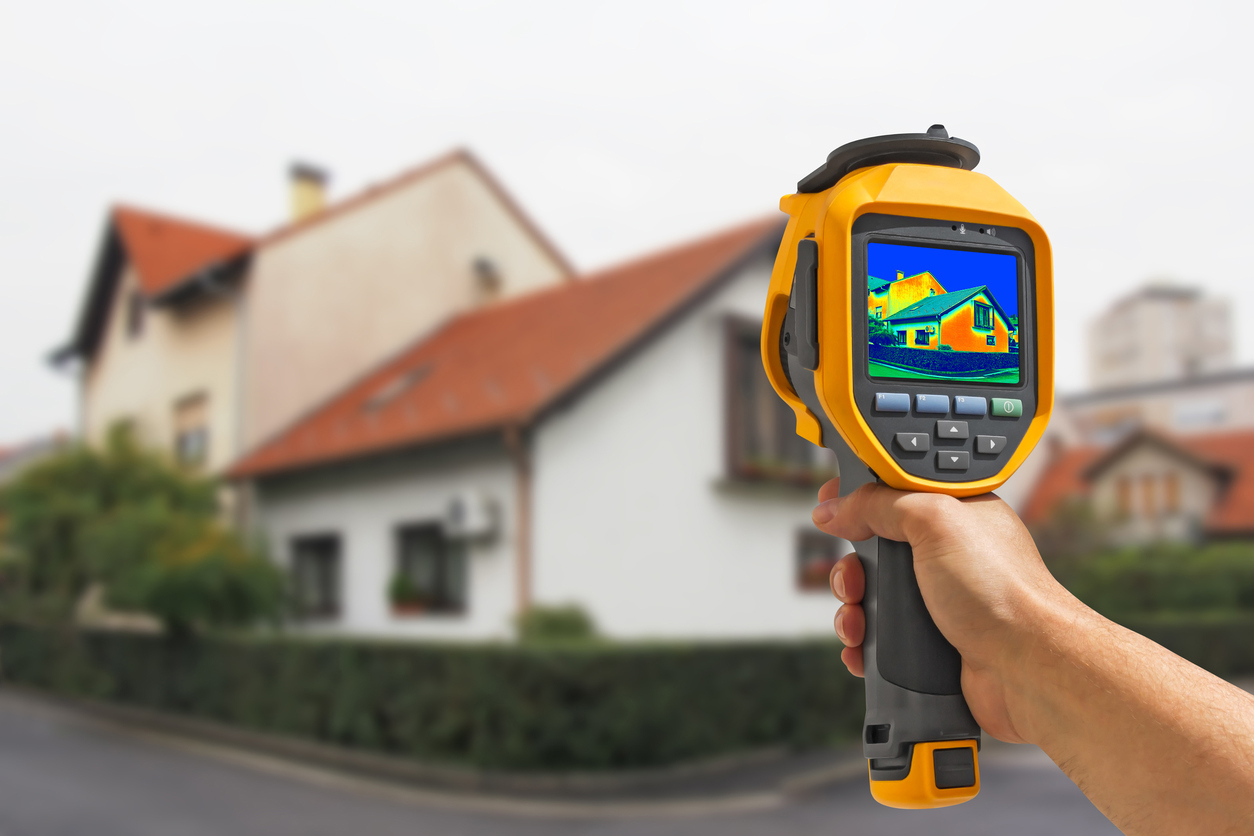
As building codes and eco-savvy customers demand more energy efficiency from their homes, it has fallen to the construction professionals to create an effective building envelope. In this task, the blower door test plays a vital role in helping builders to find the gaps in the building envelope and seal them.
Knowing how to effectively use a thermal camera along with a blower door test can really help to save you time and money. Finding the most significant leaks will help you to seal the house as cost-effectively as possible.
Using an infrared camera (thermal imager) in conjunction with a blower door test makes it easier to tell the difference between air leaks and gaps in the insulation. This is a very easy process using the following steps:
- Scan the building room by room before the blower door test so you have a baseline reading. Reading a thermal image is easier with bigger differences between indoor and outdoor temperatures.
- Set up the blower door and allow it to run so that the building is depressurized. Air from outside the house will rush in through the gaps in the building envelope to stabilize the pressure
- When the blower door is running, scan the rooms again with the thermal imager. Compare this view to the picture you took as a baseline reading. The difference in the readings will help you to discern where the leaks are. Areas where there is a rapid color change on the thermal imager are leaks while cool areas which don’t change are gaps in the insulation.
If the drywall is already on, it is very expensive to fix a leak behind it unless you remove the drywall and start over. If the blower door and thermal tests were done prior to the insulation going in and the drywall is installed the “fix” is easy. It’s best to conduct two blower door tests on a new build.
Being able to see where leaks occur behind the drywall will allow you to remedy them with pinpoint accuracy rather than wasting time and resources caulking gaps which aren’t the issue. Targeting the areas where framing is acting as a leak pathway to draw unconditioned air through the house will make a really big impact on performance.
These leak pathways may also result in condensation which can lead to mold and mildew. This can be prevented when gaps in the building envelope are sealed.
